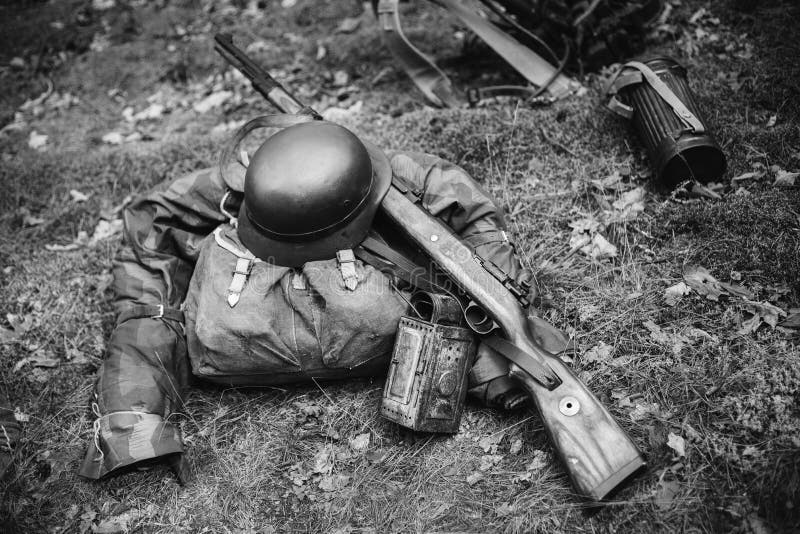
Modification of Gewehr 41(W) to gas operation, later renamed Karabiner 43. Walther self-loading rifle adopted as standard in 1942 but superseded by improved Gewehr 43. Mauser self-loading rifle design tested in 1941, not accepted for service. 131,503 produced from 1940 to 1942 for German use. The factory was run by the Austrian firm Steyr.Īdaptation of Czechoslovak vz. 29 rifle to more closely conform with standard-issue Karabiner 98k. 330,050 produced in occupied Czechoslovakia from 1938 to 1943. 24 rifle to more closely conform with standard-issue Karabiner 98k. Īpproximately 2,000 produced of first variation, 5,000 of second and third variations. Ĥ80,000 Walther P38s were made by 1945 for the German military.
#2nd world war german mauser rifle full#
Ģ5,000 delivered prior to liberation of France.Īn emergency weapon production can be traced to Mauser and Walther but full identification is still uncertain.
#2nd world war german mauser rifle manual#
The manual safety on the Sauer 38H was excluded on pistols produced between 19. Designated Pistole 12(ö) in German service. When the Austrian Army was absorbed, existing Steyr M1912 pisols were rechambered to fire 9mm Parabellum rounds.

Īfter German forces occupied France, the MAB Model D was adopted for use by the Wehrmacht during World War II.ĭesignated Pistole 645(p) in German service. Originally produced as a commercial pistol, The Mauser HSc was fully adopted by the German Navy and Air force. The Luger P08's production was taken over by Mauser after World War I. Designated "Pistole 657" in German service. The FN M1922 was mainly produced for the Luftwaffe, Also used by Wehrmacht, SS, Reich Government Officials, but oddly enough was still sold commercially up until 1942.Ĩ200 were produced under German occupation. Designated "Pistole 621" in German service. The FN M1910 was produced under the German occupation. Designated Pistole 37(u) in German service. Designated Pistole 640(b) in German service.īöhmische Waffenfabrik (Czech made under German occupation (after mid-March 1939))Īll ČZ 27's Produced for German use were all marked on the slide with "Pistole Modell 27 Kal 7.65" with the addition of "Böhmische Waffenfabrik Prag."Įxamples produced for German use included a manual safety, which was absent from the Hungarian-issue version. ģ19,000 manufactured under German occupation. The remainder of the German order, consisting of 28,000 pistols, was intercepted by Allied forces in September 1944. At the same time, the weapon has become much easier to manufacture, and its accuracy and rate of fire have not changed much.10,450 Astra 600s had been delivered to Germany until German occupation of France ceased. The manufacturer simplified the weapon as much as possible, depriving it of the system for slowing down the recoil of the bolt, cooling fins on the barrel, removing the muzzle brake, installing a simplified version of the rear sight and leaving the submachine gun without the «branded» additional handle. For example, the army version of the Thompson submachine gun from the Second World War was four times cheaper than its pre-war civilian version. Large-scale production helped to reduce the cost of production and, together with the simplification of technological processes, greatly reduced the price of weapons.

Some models were produced in hundreds of thousands of units, and the most successful-in millions of «editions». How Much did the Weapons of the Second World War Costĭuring the Second World War, the industry of most of the warring countries continuously increased the production of small arms.


 0 kommentar(er)
0 kommentar(er)
